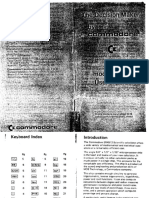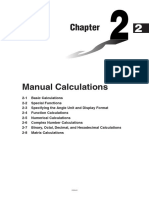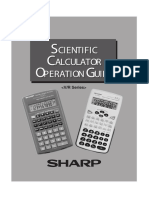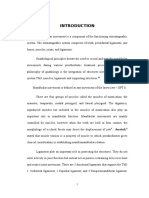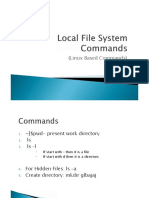BASICS OF USING SCIENTIFIC CALCULATOR
1. Calculator input methods
On a formula calculator one types in an expression and then presses ‘ENTER’ or ‘=’ to evaluate
the expression.
Example: 1+2×3=7
1 + 2 × 3 =
On an immediate execution calculator, each operation is executed as soon as the next operator is
pressed, therefore the order of operations in a mathematical expression is not taken into account.
Example: 1+2×3=7 (note that it is necessary to rearrange
operands in order to get the correct result)
2 × 3 + 1 =
In reverse Polish notation (RPN), also known as postfix notation, all operations are entered after
the operands on which the operation is performed. Reverse Polish notation is parenthesis-free
which usually leads to fewer button presses needed to perform an operation.
Example: 1+2×3=7
1 ENTER 2 ENTER 3 ENTER + ×
� Basics of Using Scientific Calculator Summary
2. Display format
Natural Display (also known as Mathematical Display, WriteView, Math Print, and Equation
Writer) causes fractions, irrational numbers and other expressions to be displayed as they are
written on paper.
Natural display Linear display
Linear display shows fractions and other expressions in a single line.
3. Correcting and clearing an expression: AC (to clear all); C or DEL (to clear last entry).
4. Execution keys: =, EXE, ENTER
5. Basic arithmetic computations (+, -, ×, )
Example: 2+5-4=3
2 + 5 - 4 =
6. Scrolling in 2 or 4 directions:
EXE ⁄
7. Toggling between fractional and decimal formats: S↔D;
8. Engineering notation: ENG
9. 1st (default), 2nd key (2nd, 2ndF, SHIFT, INV) and 3rd key (ALPHA) functions/operations
10. Functions and corresponding keys
a) Reciprocal: 1/x, x-1
Example: 1/5=0.2
5 1/x = S↔D
2
�Basics of Using Scientific Calculator Summary
b) Square:
Example: 52=25
5 x2 =
c) Powers: , , ,
Example: 53=125
5 3 =
Example: 104=10000
SHIFT log 4 =
d) Roots, square root: √ , √ , √ , √ , sqrt
Example: 225 15
√ 25 =
e) Logarithms: ln (for base of e), log (for base of 10)
Example: ln3.2=1.163...
ln 3 ) =
f) Fractions: ; ; , ⁄ , ⁄ , a ┘b
Example: 2/3+1/6=5/6
3 → + 1 6 =
g) Percentages: %
Example: 150×20%=30
150 × 20 % =
h) Trigonometric functions: sin, cos, tan
Example: sin30o=1/2=0.5
sin 30 ) =
3
� Basics of Using Scientific Calculator Summary
i) Inverse trigonometric functions: sin-1, cos-1, tan-1 (preceded by pressing 2nd , 2ndF,
SHIFT or INV keys)
Example: tan-112=85.236
SHIFT tan 12 ) =
j) Switching between degrees and radians for trigonometric functions
SHIFT MODE Deg/Rad
11. Constants: π = 3.14; e = 2.71
12. Evaluating a formula (brackets, using arrows to move along the formula, taking care of order
of operations with immediate execution calculators)
7 23 5) 15
Example: 3
0.1549
5 25
√ 7 + 2 ( 3 - 5 ) 5 3 =
Try computing the following:
V I R (I 5.36; R 14.76)
v u at (u 9.54; a 3.67; t 7.82)
A r 2 (r 5.23)
13. References
http://support.casio.com/pdf/004/fx-83_85GT_PLUS_E.pdf
http://www.usersmanualguide.com/manuals/casio/FX-7700G.pdf
http://www.sharpdirect.co.uk/content/ebiz/sharp/resources/pdf/calcs/Operation_Guide_W
riteview.pdf
http://www.voidware.com/manuals/fx502p.pdf
http://h10032.www1.hp.com/ctg/Manual/bpia5305.pdf
